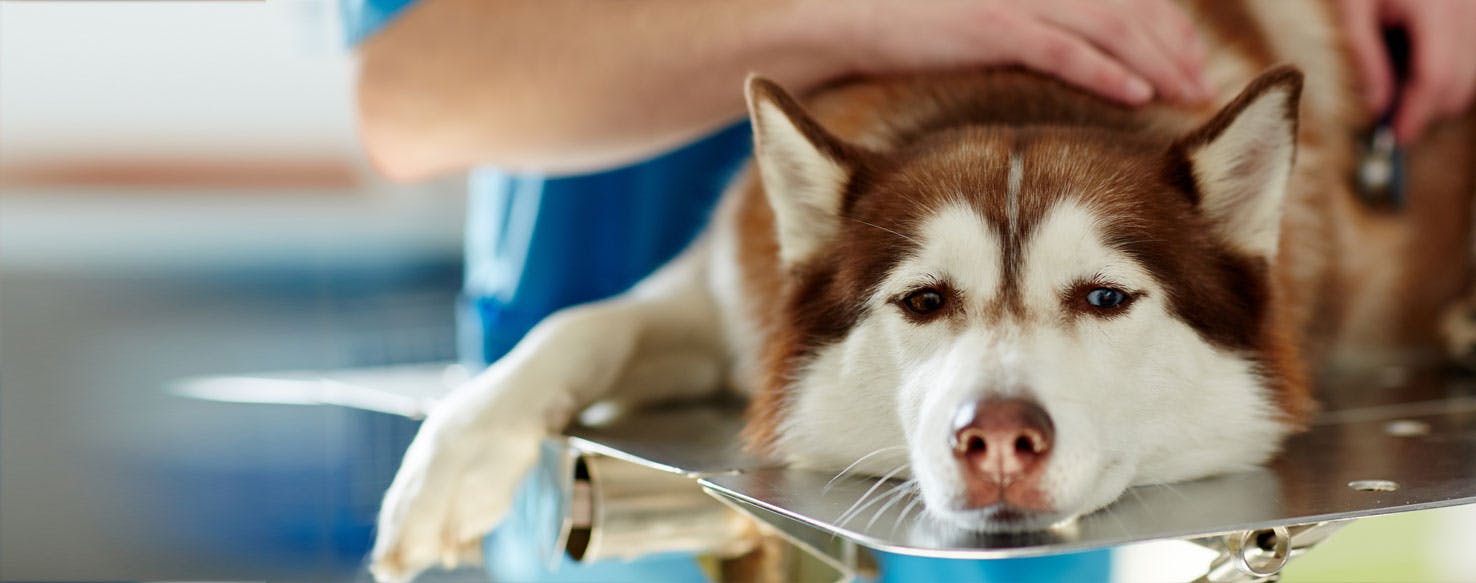- Home
- The Daily Wag!
- Senses
- Can Dogs Live Through Parvo?

If you haven't yet heard about this horrible parasitic disease, we'll fill you in. Parvo, or canine parvovirus, can be deadly if not caught in time.
Parvo is a highly contagious viral illness that shows its ugly head either as severe intestinal distress (excessive vomiting, fever, fouler than foul smelling bloody diarrhea), lethargy, weight loss and complete loss of appetite or in the case of young puppies, it can also manifest in cardiac form.
Parvo is most common in puppies between the ages of 6 weeks and 6 months. This is one of the reasons that it is imperative that all puppies get fully vaccinated. The parvovirus makes it impossible for an infected Dog's system to absorb nutrients.
A dog can contact parvo through exposure to another dog's feces, urine or saliva. It is believed that the virus can lay dormant for up to a year after an outbreak, so it is imperative that an area where an infected dog has been be properly cleaned and disinfected thoroughly to prevent the further spread of this disease. Some cases, sadly, do result in death, but can dogs live through parvo?
The answer is, thankfully, yes. First, you must take your dog to the vet immediately to be tested and placed in a secure, infection-free area if you suspect Parvo. If your pup does, in fact, have Parvo the vet will attempt to treat it with intravenous fluids and medications.
The survival rate for Parvo is about 70% if treated in time. Unfortunately, some deaths do still occur due to extreme dehydration or organ failure. Puppies have the worst mortality rate - so, again, we stress the importance of proper vaccinations when your dog is young.
A dog exhibiting signs of this dreadful virus will often have reddened eyes, bloody, foul-smelling diarrhea, vomiting, loss of appetite and extreme weakness. If you notice these signs, take your dog to the vet immediately and inform the vet tech you suspect Parvo so they can make arrangements to keep your dog and others safe from passing on any of the symptoms to other dogs.
Once you've been through a Parvo scare (or worse, a Parvo-caused death), the signs are very apparent. You know what to look for, what smells to smell for and you will likely know by your dog's body language that they need to be seen by the vet immediately to ensure their diagnosis and hopeful recovery (if they indeed are diagnosed with Parvo).
If your dog is extremely lethargic and has stopped eating, get them to the vet ASAP, even if the other symptoms have not manifested yet.
Body Language
Here are some of the main body languages to watch for if you think your pup might have Parvo:
- Whining
- Shaking
- Cowering
- Panting
- Ears Drop
- Weakness
Other Signs
These are a few more signs you should be on the lookout for:
- Shaking
- Rapid Heartrate
- Extreme Weakness
- Gastrointestinal Distress
Strains of this virus were first seen in 1978 in the US, Europe, Asia and Australia when a similar virus (feline panleukopenia) was transmitted between cats to dogs. By 1980, the virus had infected and killed thousands of dogs worldwide.
Dr Leland Carmichael and Max Appel of the Baker Institute became the first to successfully develop a working vaccine against the parvovirus, and due to their hard work and the work of countless other researchers and scientists, the vaccine continues to save countless dogs year after year!
Science has shown us that Parvo infection is most likely caused by a genetic mutation of the original parvovirus or the canine parvovirus type 2b. The infection is spread through direct contact with an infected dog, either by touching an infected dog's mouth or contacting the infected dog's fecal matter.
This virus is so highly contagious to healthy dogs that just sniffing infected fecal matter can cause another dog to get ill. Studies have also shown that the virus can be carried through the soles of shoes (shoes that have been in an infected parvo area) into a new environment. The virus will then begin setting up shop in the new environment.
If you are in contact with the virus, be better safe than sorry, and throw away and any all clothing, including your shoes, that you were wearing at the time.
After all of the dogs are removed from the infected area, and all feces and vomit have been safely and properly disposed of, the area will then need to be thoroughly disinfected with bleach and other chemicals known to kill this deadly virus. There are even companies that will clean the infected area for you. This is a step you do not want to scrimp on - this is your dog's life we are talking about. In the case of a parvovirus outbreak in an animal shelter, the risk is even higher.
Have questions or concerns about your pet?
Chat with a veterinary professional in the Wag! app 24/7.
Get Vet ChatSafety Tips if You Suspect Your Dog has Parvo
- First - get them to the vet immediately!
- Don't try and force your dog to eat or drink. They are not able to absorb any nutrition if they have Parvo anyway and eating and drinking will likely cause them to vomit or make their diarrhea worse.
- Disinfect the area thoroughly more than once. Throw away any linens or beds your dog came into contact with.
Written by a Smooth Coated Collie lover Mary Alane Whalen
Veterinary reviewed by:
Published: 01/31/2018, edited: 04/06/2020
More articles by Mary Alane Whalen

